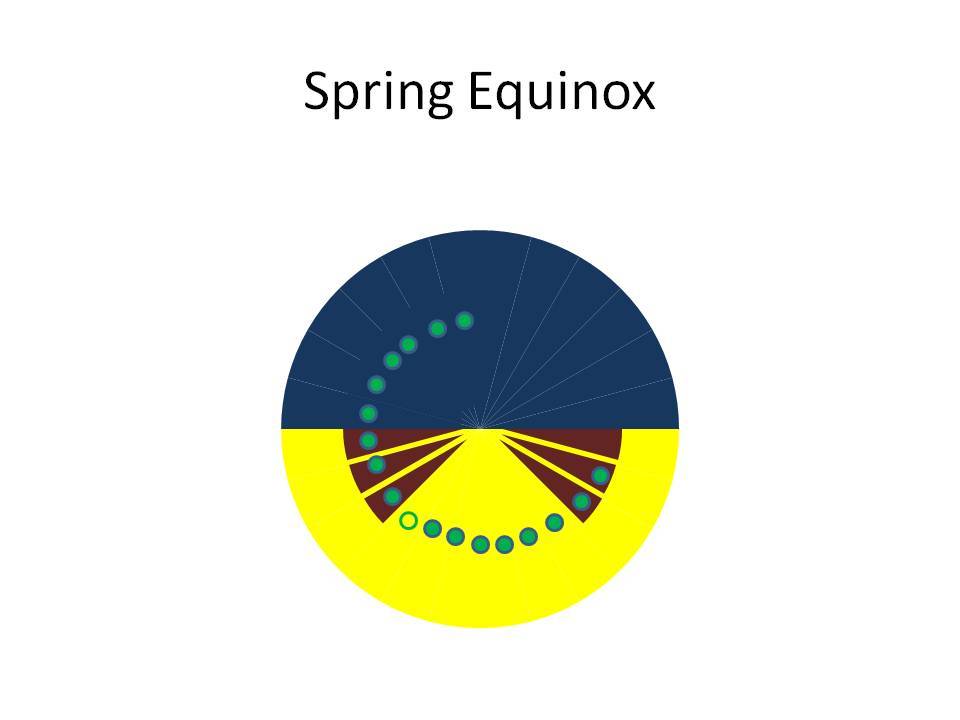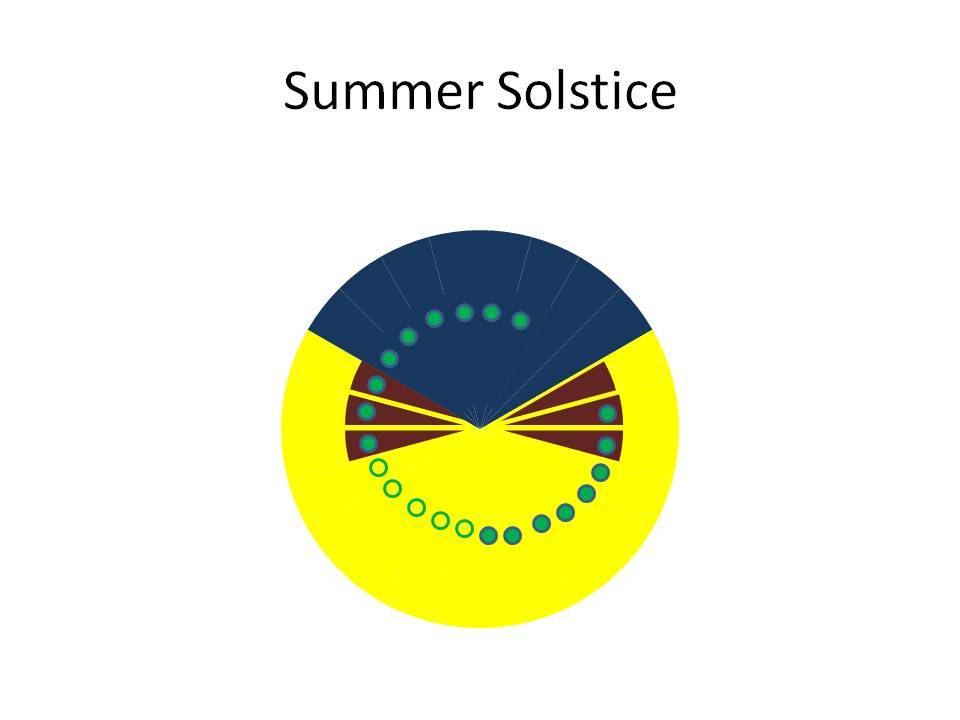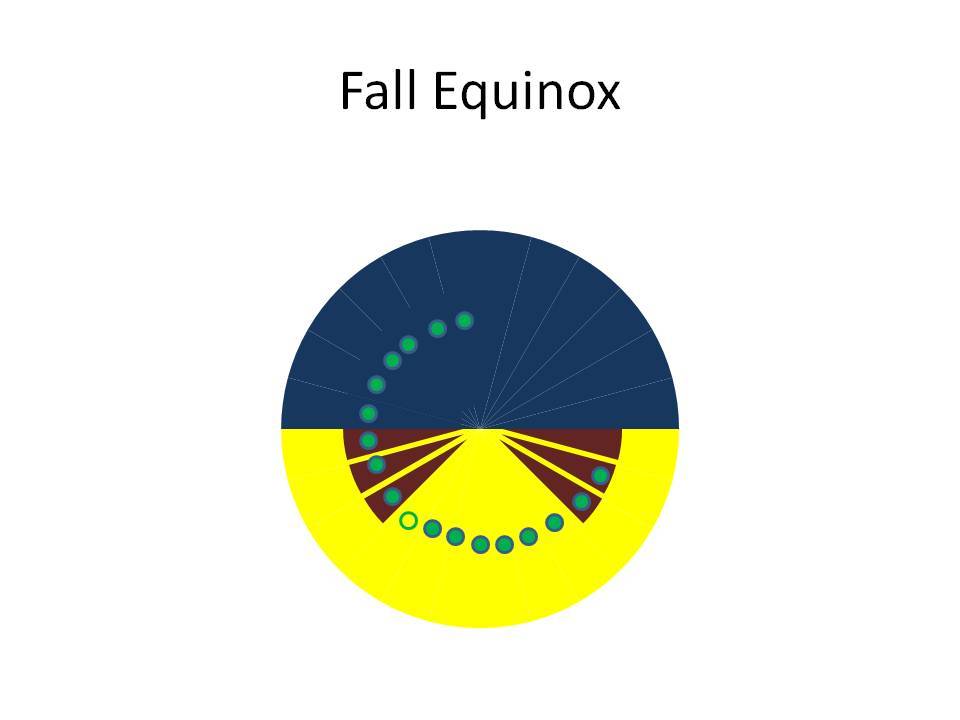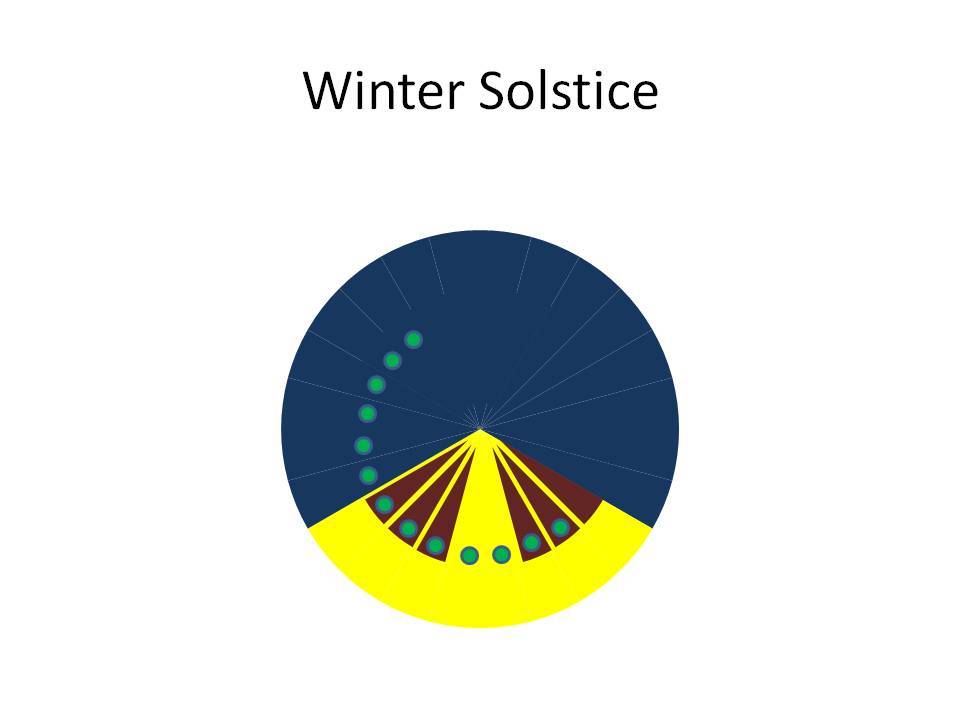- Thread starter
- #11
I have not seen a repeat of nocturnal activity (on ground) associated with full moon but they are more talkative as I walk by. Observations over last year that may be related deal with interactions of photoperiod, feeding activity and crop fill. The following charts repressent 24 hour diel cycles with light and dark periods denoted by yellow and blue, respectively in the outer circles. Periods of active feeding are indicated by reddish colored slices. Periods where crops appear to contain food indicated by green circles. My birds have two periods of heavy feeding, 1) approximately 3 hours after sunrise and 2) last 3 hours or so before sunset. During middle of day they will feed opportunistically on insects and such but generally they stay within patches of cover. I think they would be out more if not pressured by hawks. My birds are truely free range with no barriers between them and potential predators other than chicken behavior and usage of available cover. In morning it takes solid hour of feeding before crop begins to fill. Once crop filled and feeding stops, roughly six hours required for crop to empty. At around spring and fall equinox the birds have roughly 12 hours of activity in daylight and crops are have something in them or feeding is taking place almost 2/3 of diel cycle. At around summer solstice some food is in crop almost around the clock. It is around winter solstice that a problem is apparent. The chickens have a nearly 12 hour period where the crop is empty and probably nealry as long a period where digestive tract is not providing energy. This could be a problem for the birds, especially when challenged by increased need for energy with low temperatures. Empty crops might stimulate increased interest in feeding at lower light levels. The birds may also compensate during day by consuming more and going into night with more heavily loaded crops. If options exist, then they may also target more nutrient dense foods. I have observed them to reduce energy requirments by moving to locations less exposed to wind and more heated by sunlight.









